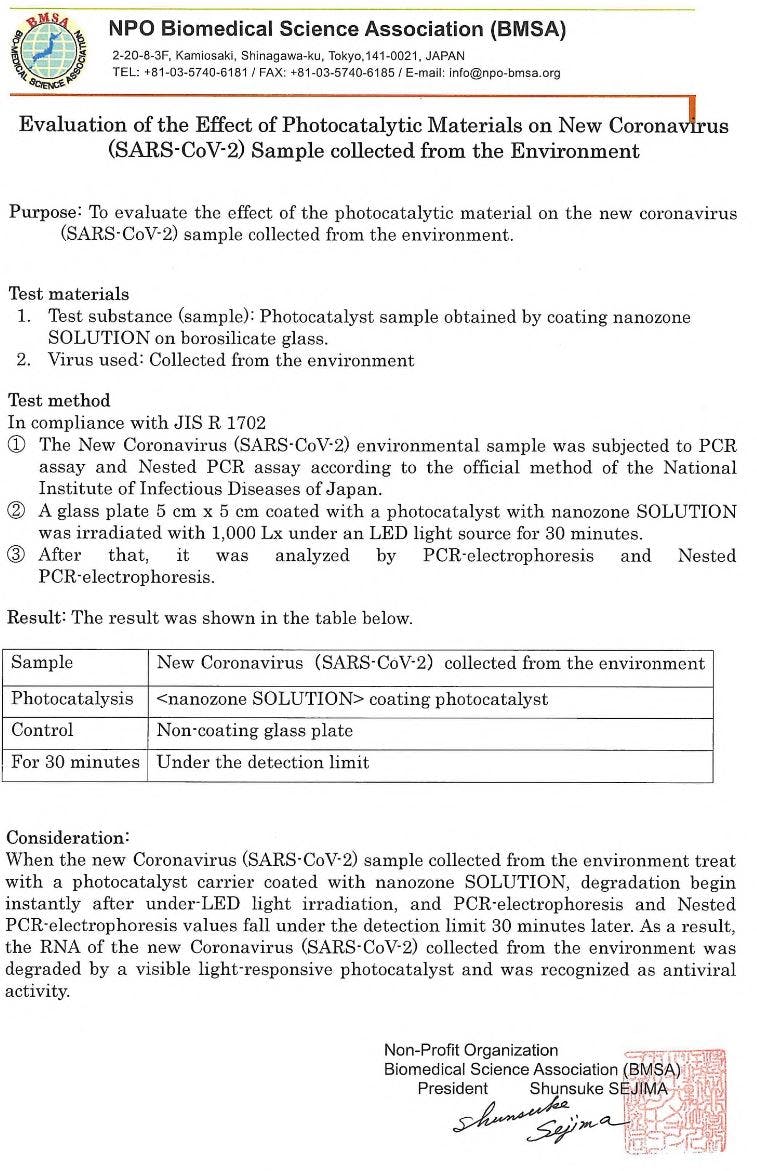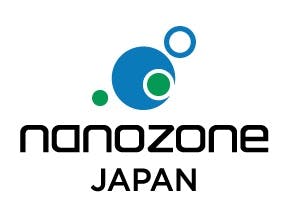
For Multilingual
NPO Biomedical Science Association (BMSA)
Evaluation of the Effect of Photocatalytic Materials on New Corona virus (SARS-CoV-2)
Sample collected from the Environment
Sample collected from the Environment
Purpose To evaluate the effect of the photocatalytic material on the new coronavirus (SARS"CoV"2)
sample collected from the environment.
Test method
In compliance with JIS R 17021.
1.Environmental specimens of the new coronavirus (SARS-CoV-2) were examined via the PCR test and Nested PCR
test in accordance with regulations of the National Institute of Infectious Diseases
2. In the laboratory, a 5 x 5 cm glass plate coated with a photocatalyst with nanozone SOLUTION was irradiated for
30 min under an LED light source at 1,000LX.
Test method
In compliance with JIS R 17021.
1.Environmental specimens of the new coronavirus (SARS-CoV-2) were examined via the PCR test and Nested PCR
test in accordance with regulations of the National Institute of Infectious Diseases
2. In the laboratory, a 5 x 5 cm glass plate coated with a photocatalyst with nanozone SOLUTION was irradiated for
30 min under an LED light source at 1,000LX.
Result
The results are listed in the table below
Sample: New Coronavirus (SARS-CoV-2) environmental specimen
Photocatalysis: coated glass plate
Comparison contrast :Uncoated glass plate
After 30min. irradiation: Below the detection limit
Consideration
The new coronavirus (SARS-CoV-2) sample collected from the environment was processed with a photocatalytic carrier photocatalyst coated with nonozone SOLUTION. The collected new coronavirus sample begins to decompose instantaneously after irradiation under the LED light source. In the PCR and Nested PCR tests, the new coronavirus was below the detection limit after 30 min. This indicates that the RNA of the collected new coronavirus is degraded by the visible-light-responsive photocatalyst; that is, the photocatalyst exhibited antiviral activity.
The results are listed in the table below
Sample: New Coronavirus (SARS-CoV-2) environmental specimen
Photocatalysis:
Comparison contrast :Uncoated glass plate
After 30min. irradiation: Below the detection limit
Consideration
The new coronavirus (SARS-CoV-2) sample collected from the environment was processed with a photocatalytic carrier photocatalyst coated with nonozone SOLUTION. The collected new coronavirus sample begins to decompose instantaneously after irradiation under the LED light source. In the PCR and Nested PCR tests, the new coronavirus was below the detection limit after 30 min. This indicates that the RNA of the collected new coronavirus is degraded by the visible-light-responsive photocatalyst; that is, the photocatalyst exhibited antiviral activity.

